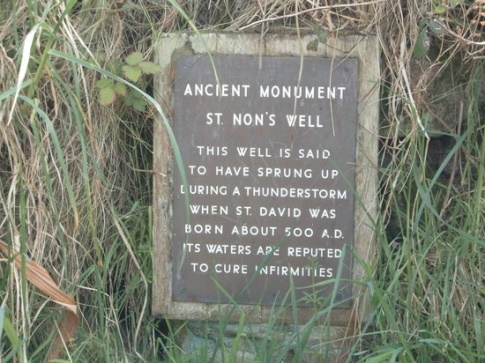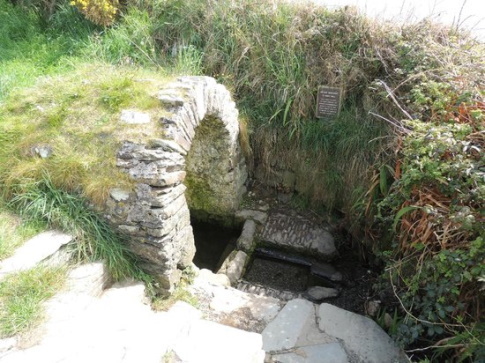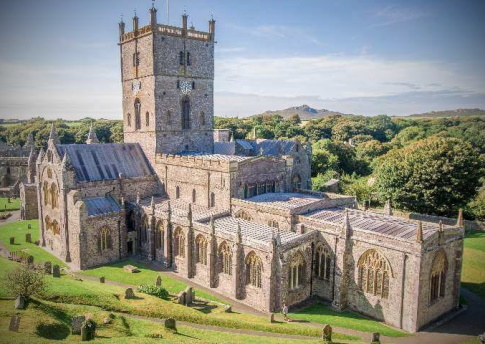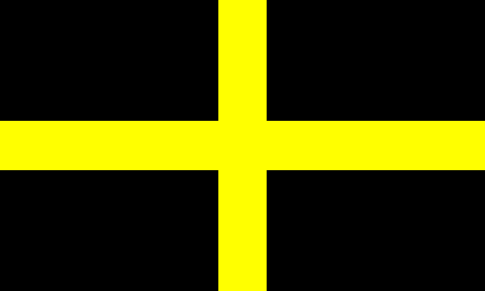1st March - Saint David's Day
Written by Anne Newman 1st March 2020 with additions 2022 / 23

Dydd Gŵyl Dewi Hapus
There are many ways to celebrate St. Davids Day - with Welsh cakes, wear yellow or even don a leek, set up a simple centre of daffodils, greet friends and neighbours with shwmae - hello, or Bore da - Good morning, Prynhawn da - Good afternoon, Noswaith dda - Good evening, Nos da - Goodnight, go to one of the many events and parades... Ideas of how to celebrate St David's Day
St David is the patron saint of Wales and he plays a very important role in Welsh culture.
It is said that he died in 589, and was over 100 years old. His father was Sant, a grandson of the King of Ceredigion, in South West Wales. His mother was Non or Nonita, said to be a niece of King Arthur, others say she was a nun. There is also a claim that St Patrick was born in the area and David's birth was foretold by Patrick.
 |  |
The tradition that he was born at Henfynyw (Vetus-Menevia) in Ceredigion.
David
became known as Dewi Dyfrwr (‘David the water drinker’) because of his
modest monk’s diet of bread and water. Even meat and beer were
forbidden.
Gwnewch y pethau bychain or “Do the little things” are considered to
be his most famous words, and potentially his final ones. St David
believed that the people of Wales should do the small, considerate
things that often make a big difference. He is said to have been very
gentle and physically strong and tall.
St David travelled widely throughout Wales, Cornwall in the south-west of England, Brittany in France and possibly to Ireland and Jerusalem. He became renowned as a teacher and eventually became an archbishop.
His last sermon contained the words:
Be joyful, keep the faith, and do the little things that you have heard and seen me do.
Gwnewch y pethau bychain mewn bywyd - Do the little things in life - is still a well-known saying in Wales.

St Davids
Britain’s smallest city. During the 10th and 11th centuries the Cathedral was regularly raided by Vikings, who removed the shrine from the church and stripped off the precious metal adornments. In 1275 a new shrine was constructed, the ruined base of which remains to this day, which was originally surmounted by an ornamental wooden canopy with murals of David, Patrick and Denis.
The shrine was a popular place of pilgrimage throughout the Middle Ages. Pope Callistus II thought of it so highly that he declared that two pilgrimages to the shrine was worth one to the Vatican in Rome.
By the 12th century, more than 60 churches in Wales had also been dedicated to St David. He was canonized in 1120 and 1st March was made St David's Day.
Miracles
St David is said to have performed many miracles. It's claimed he restored a blind man’s sight and brought a dead boy back to life, simply by splashing his face with tears.
His most famous miracle though, took place in Llanddewi Brefi, between the Brecon Beacons and the coastal town of Aberystwyth. While he was preaching to the crowd some of the crowd were finding it difficult to hear the sermon. A white dove landed on David’s shoulder. As it did, the ground on which he stood rose up to form a mighty hill, making it possible for the gathered crowd to finally see and hear him. David is often shown holding a dove standing on a hillock. The dove became St David’s emblem, often appearing in his portraits and on stained glass windows depicting him. Today, a church stands on the crest of that special hill.
Symbols and Flag
His symbol is the leek. As legend has it, David ordered Welsh soldiers to wear leeks in their helmets before fighting the Saxons and it was this that secured victory.
Also worn on St. David's Day, the wild daffodil - Narcissus pseudonarcissus - has six pale yellow, almost white, petals. These are thinner than cultivated varieties and have a teardrop profile with a vibrant yellow central trumpet. However, there is also a Tenby daffodil that is all yellow.
The flag of Wales, Y Ddraig Goch (The Red Dragon), dates from about the 15th century, yet there is another flag that has gained popularity in the 20th century.
In 1994, the Welsh Tartan Company (WTC) of Cardiff was researching other possible products, to complement its existing Brithwe Dewi Sant (St David's Tartan), which was mostly red and green. To promote public recognition and use of the design, the WTC printed 1,000 St David's flags and distributed them around Wales; a PR campaign took place to increase knowledge of the flag. The flags were hung prominently in the Welsh shop in the centre of Cardiff and at other locations. Within 10 years, the St David's Flag was known and flown across Wales in patriotic use. from Wikipedia for Flag of St. David
| St David’s flag |  |





